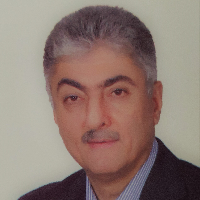An Investigation of Evolution of the Concept of Public Art
Art has always played a critical role in forming cultural, social, and political symbols and especially during the last three decades, it, in form of public art, has caught the attention of artists and experts of fields related to public domains including urban designers and planners, architects, geographers, sociologists and politicians. As such, in the 20th century, a variety of factors including fast growth of cities and reduction of quality of public space as a result of urban communities’ ignorance about this growth procedure, the specialization of different fields of sciences and technologies, and understanding the role of arts in promoting the conceptual aspects of public space have been influential in giving shape to public art. Since then, one of the most important questions about public art has been whether any artwork which exists in public realm and is accessible to open space can be called public artwork. Since public art concept, unlike other phenomenon, is not stable and changes in the course of the time, investigating different accounts of this concept, its evolution and its theoretical basis can be assumed to be one way to prepare a base for answering the question that: “what is public art?”. In the second half of the 20th century, the growth of attentions to public spaces remaining from modernist approaches to architecture and urban planning in many countries encouraged local governments to benefit from ‘a percent for art’ policy in built environment developments. With this policy, artworks, which had disappeared in such spaces for more than half a century, re-emerged in public spaces. Therefore, in the initial years of following this policy, the artists, who up until that time had exhibited their artworks in modern museums, found the opportunity to put them on view in public and accessible spaces. After less than three decades, the appearance of these artworks that were devoid of the socio-spatial dimensions of public spaces has been criticized by citizens and social and art critics. With the increase of these criticisms, a new paradigm, with socio-spatial dimensions being in its central core, emerged in public art field from the end of 1980s to the beginning of 1990s. With a deliberative and comparative review of evolution of public art concepts and definitions, this paper introduces the 1990s as the paradigm shift and public art theoretical basis transformation period, and divides the evolution of public art into two general periods; the first one since 1960s to 1990s, this period was dominated by artist-oriented public art that the modernism concepts of space was followed in designing and creating of artworks in public open spaces, and the other since 1990s up until now, which introduces the theoretical basis of the public art development process in social contexts. Drawing on related literature, a definition of public art is presented and also concerns regarding future of public art in relation to public spaces that is becoming more and more privatized in many countries, are debated.
- حق عضویت دریافتی صرف حمایت از نشریات عضو و نگهداری، تکمیل و توسعه مگیران میشود.
- پرداخت حق اشتراک و دانلود مقالات اجازه بازنشر آن در سایر رسانههای چاپی و دیجیتال را به کاربر نمیدهد.



